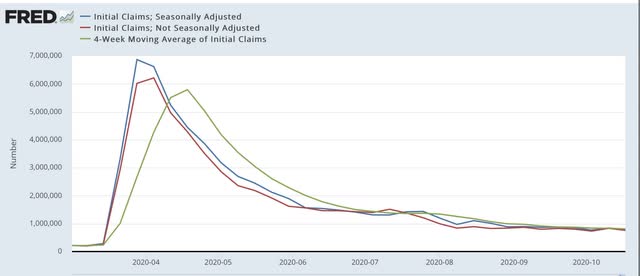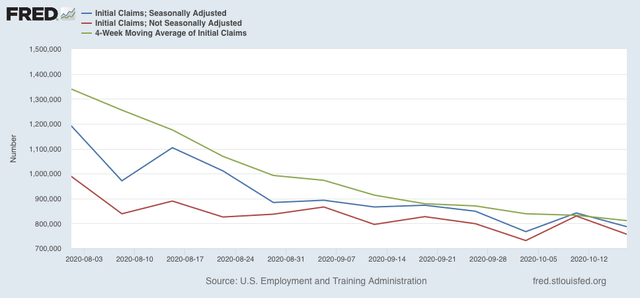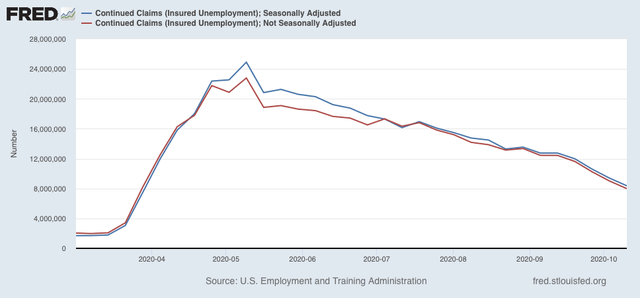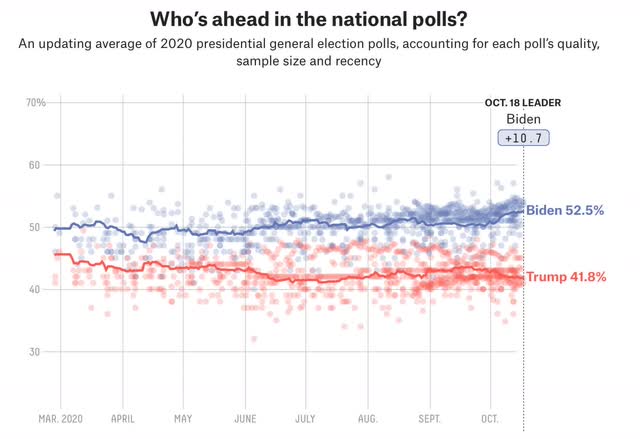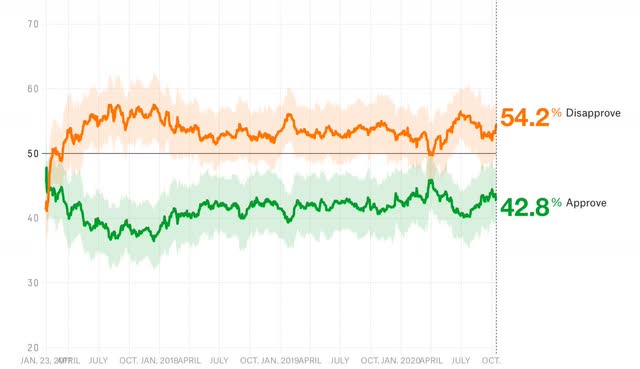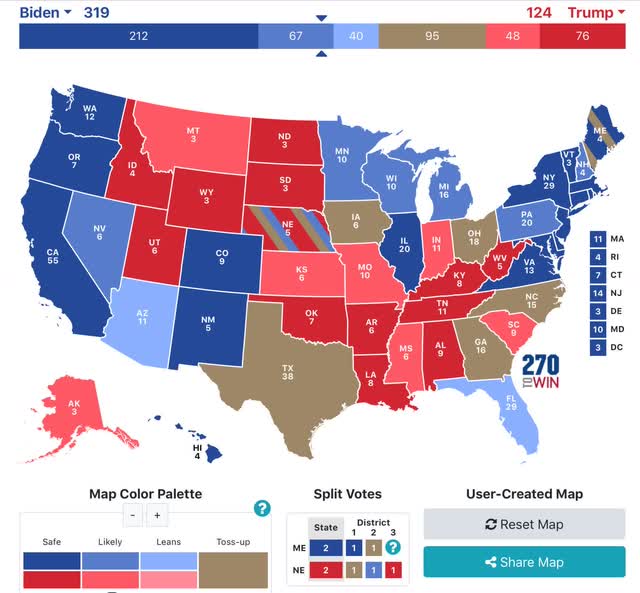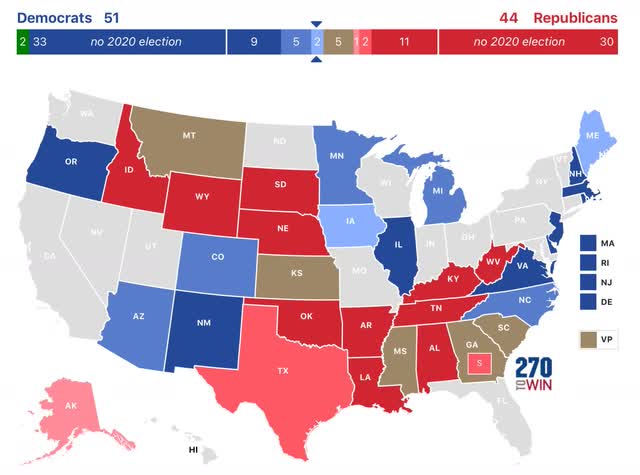- by New Deal democrat
Total US confirmed infections: 8,273,296*
Average US infections last 7 days: 59,527 (vs. recent low of 34,354 on Sept 12)
Total US deaths: 221,052
Average US deaths last 7 days: 738 (vs. recent low of 689 4 days ago)
*I suspect the real number is 14-15,000,000, or over 4% of the total US population
Source: COVID Tracking Project
As we head into the cold weather, experts are warning that, as bad as the pandemic has been up until now, it is likely to be far worse over the next few months.
We’ll look at the bad news. But first, let’s look at some good news: 60,000,000 Americans live in two large States that have largely contained the pandemic - California and New York.
My benchmark, as usual is adjoining Canada, which most recently has averaged 6.34 infections per 100,000 people daily:
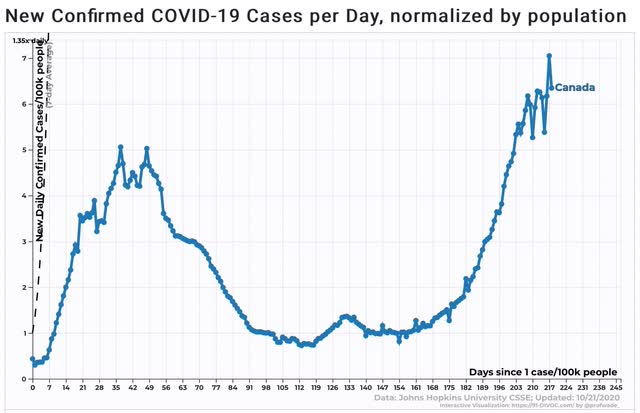
Canada’s most recent death rate has averaged 0.0534 per 100,000 over the past week (or roughly 1 death daily for every 2,000,000 people):
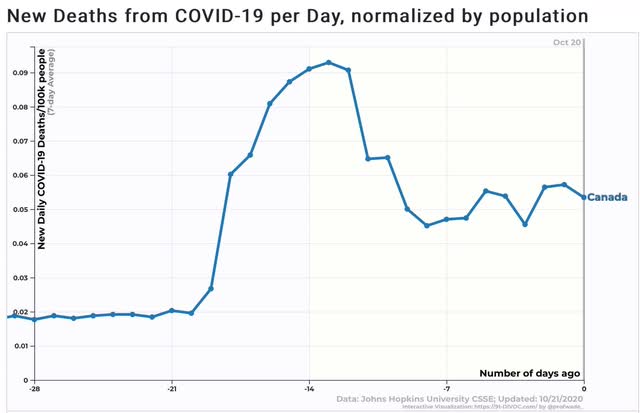
By contrast, California has most recently averaged 8.11 infections per 100,000 people, and New York 7.18 infections:
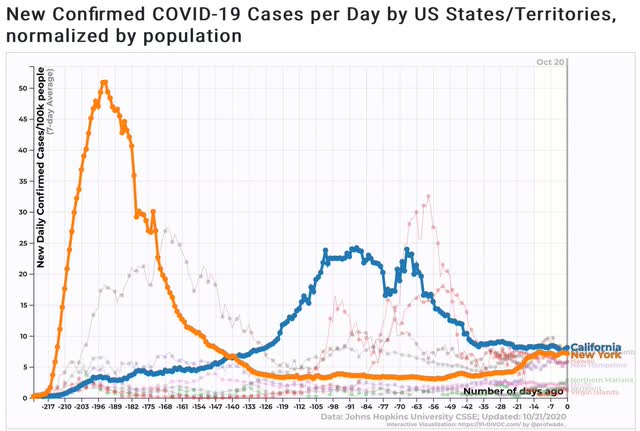
These are not much higher than Canada.
California has most recently averaged 0.149 deaths per 100,000 people, and New York 0.0477:
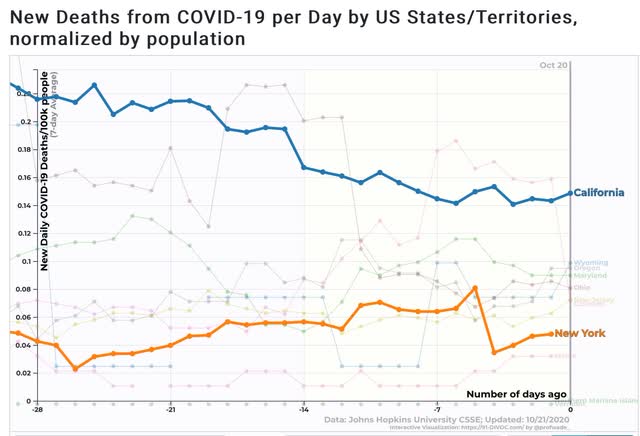
California’s death rate is still elevated, but can be expected to follow its infection rate. New York’s death rate is now *lower* than Canada’s.
In short, over 1/6th of the entire US population - over 60,000,000 people - lives in States (also including Maine, New Hampshire, Vermont, and in terms of cases, Hawaii) where the pandemic has largely been contained due to intelligent and relentless government action.
And now, the bad news. The pandemic is raging in the upper Plains and Mountain States.
Here are the top 10 States for infections:
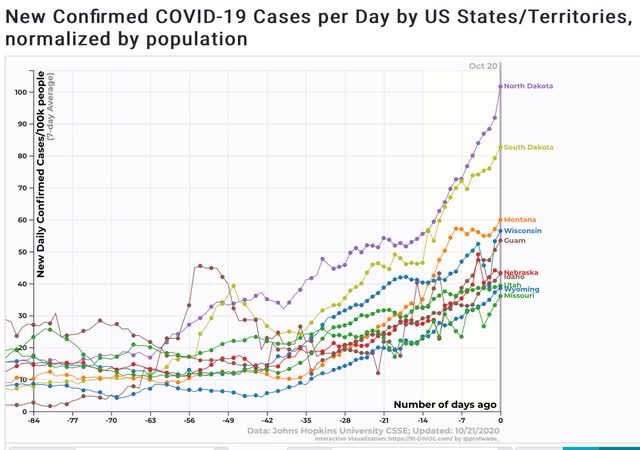
And here are the top 10 States for deaths:
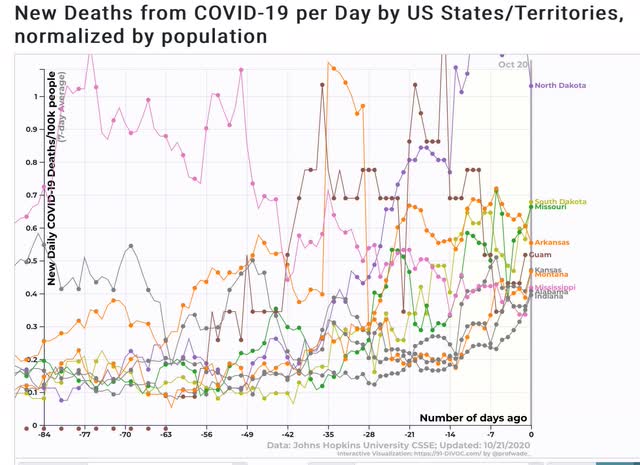
With the exception of Wisconsin, there are all deep Red States. Wisconsin has a reactionary deep Red Supreme Court which has prevented the governor from taking any effective action.
Four States - Wisconsin, Montana, North and South Dakota - all have rates of infection exceeding that of New York in March and April, and Arizona in July. The “relatively” good news is that treatments have improved so much that even North Dakota’s death rate is only about 1/7th of that of New York’s early in the pandemic, and is not yet worse than Arizona’s in July.
The bottom line for me is that, if California and New York have been able to contain the pandemic during Trump’s malAdministration, then only States that are willfully recalcitrant need to face the pandemic uncontrolled after a few months into a Biden Administration.
